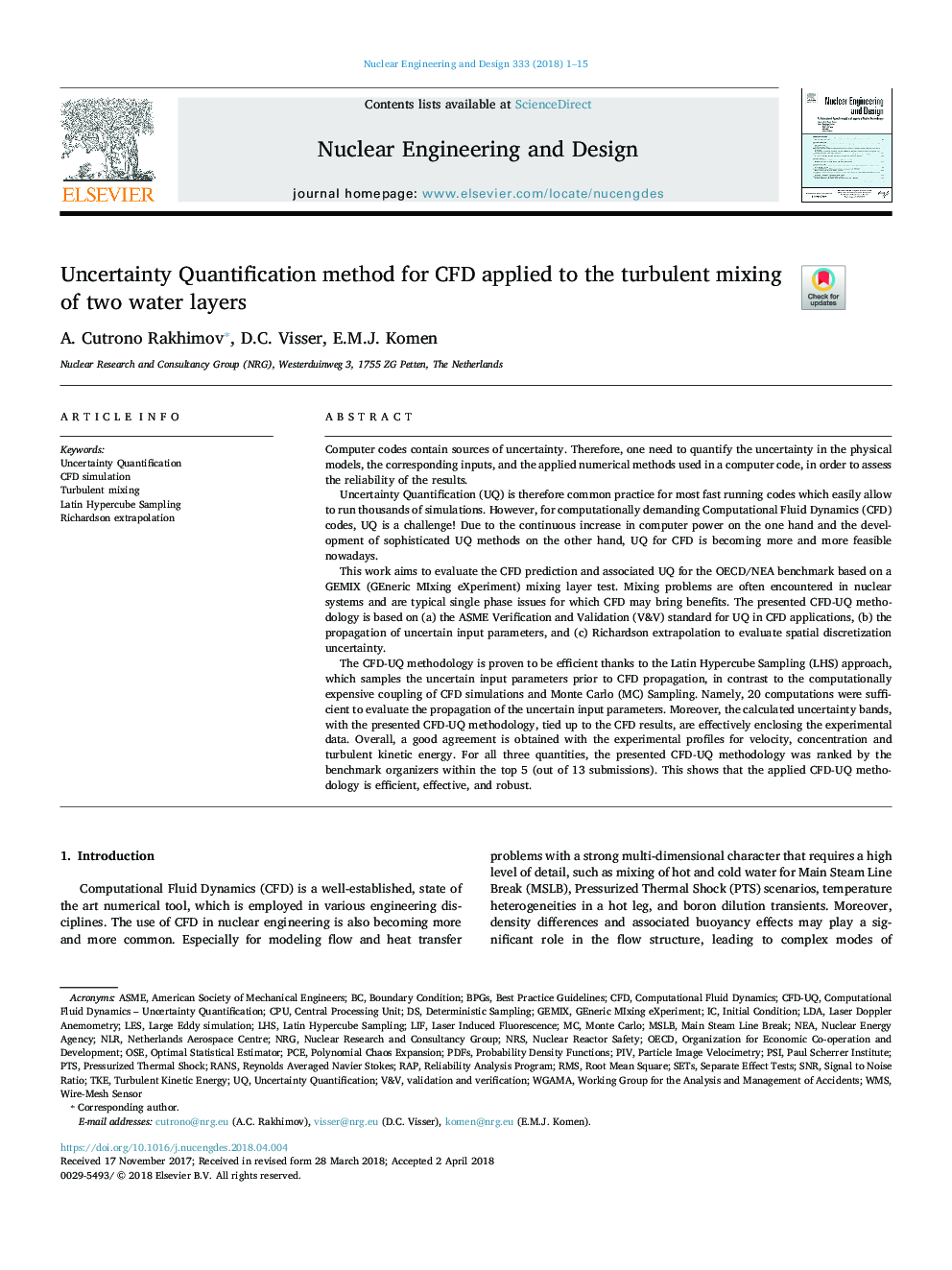| Article ID | Journal | Published Year | Pages | File Type |
|---|---|---|---|---|
| 6758852 | Nuclear Engineering and Design | 2018 | 15 Pages |
Abstract
The CFD-UQ methodology is proven to be efficient thanks to the Latin Hypercube Sampling (LHS) approach, which samples the uncertain input parameters prior to CFD propagation, in contrast to the computationally expensive coupling of CFD simulations and Monte Carlo (MC) Sampling. Namely, 20 computations were sufficient to evaluate the propagation of the uncertain input parameters. Moreover, the calculated uncertainty bands, with the presented CFD-UQ methodology, tied up to the CFD results, are effectively enclosing the experimental data. Overall, a good agreement is obtained with the experimental profiles for velocity, concentration and turbulent kinetic energy. For all three quantities, the presented CFD-UQ methodology was ranked by the benchmark organizers within the top 5 (out of 13 submissions). This shows that the applied CFD-UQ methodology is efficient, effective, and robust.
Keywords
NLRPCEPSINEAWMSSNROECDNRSPTSRMSPDFSNRGTKEMain steam line breakReynolds Averaged Navier StokesLIFMSLBRAPPIVLESCPULHSOSEV&VLaser Doppler anemometryNuclear Energy AgencyValidation and verificationAmerican Society of Mechanical EngineersTurbulent kinetic energyNuclear reactor safetyLDAProbability density functionsWire-mesh sensorBest Practice GuidelinesCFDComputational fluid dynamicsRANSMonte CarloRichardson ExtrapolationOrganization for Economic Co-operation and DevelopmentParticle image velocimetryCFD simulationLarge Eddy SimulationInitial conditionPressurized thermal shockLaser induced fluorescenceASMESetsTurbulent mixingBoundary conditionroot mean squaresignal to noise ratioLatin hypercube samplingDeterministic samplingcentral processing unitUncertainty quantificationPolynomial chaos expansion
Related Topics
Physical Sciences and Engineering
Energy
Energy Engineering and Power Technology
Authors
A. Cutrono Rakhimov, D.C. Visser, E.M.J. Komen,
